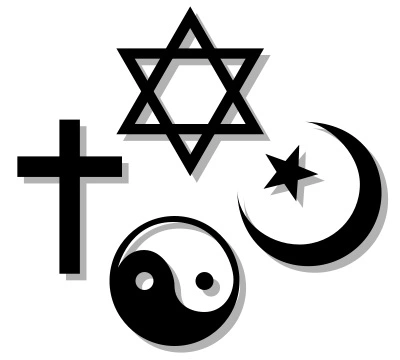Canaanite religion
Publié le 22/02/2012
Extrait du document

The religion of Palestine
and Syria during the third and second millennia
(3000–1001) B.C.E. In the fi rst millennium B.C.E.
Canaanite religion came into confl ict with the
worship of YHWH ("the Lord"), especially in the
northern kingdom of Israel.
Technically, the name "Canaanite" applies only
to the ancient inhabitants of Palestine. But people
also use it for all peoples and settlements that
spoke languages known as "Northwest Semitic."
These peoples inhabited the region between two
major ancient powers, Egypt and Mesopotamia.
Not much is known in detail of their history. But
during the 20th century two major archaeological
fi nds unearthed many Canaanite texts. Among
other topics, they shed light on Canaanite religion.
These fi nds were the ancient cities of Ugarit (discovered
1929) and Ebla (discovered 1968).
The Canaanites worshipped several deities.
Two were the pair El (the Semitic word for "god")
and Athirat, also known as Asherah. El was the
"father of gods and men." He created the world.
Athirat was the mother of the gods. Together, they
were worshipped as king and queen.
Another pair of gods was BAAL, also known as
Hadad, and Anat, his sister and wife. The name
Baal means "lord." A god of the storms, Baal
is called "rider of the clouds." Anat was a GODDESS
renowned both for beauty and violence. Yet
another goddess renowned for beauty and violence
was Athtart. Mesopotamians called her Ishtar; the
BIBLE calls her Ashtoreth.
A prominent Canaanite myth concerns the god
Baal. It tells how he fought and defeated the sea, a
son of El named Yamm. But when Baal faced another
son of El, Mot, the god of death, he was defeated and
killed. His sister, Anat, avenged his death. Baal was
restored to life and in the end defeated death in battle.
Earlier scholars thought this story refl ected the
yearly cycle of the seasons. Current opinion takes it
as referring instead to an irregular drought.
Canaanite WORSHIP was much like worship in
other parts of the ancient Near East. It centered on
SACRIFICES and offerings. The Canaanites performed
these on at least two social levels. One level was
the city. The king oversaw its worship. The second
level was the local community. Individuals seem to
have performed in local cults for themselves. They
sacrifi ced at high places throughout the year. They
also held celebrations in conjunction with planting
and harvesting in spring and autumn. Like many
ancient peoples, the Canaanites had a complex
system of RITUAL specialists. It is not clear what any
of the specialists mentioned in the Canaanite texts
actually did.
During the fi rst millennium, Canaanite religion
in Palestine gradually gave way to the worship of
YHWH. But the worship of YHWH also adopted
Canaanite elements. In some sense, YHWH combines
the characteristics of El and Baal. He creates
the world. He is also a god of the storms. Like
Baal, he rides the clouds (Psalms 68.4) and defeats
the sea (PSALMS 89.9–10; JOB 26.12–13). It is also
possible that Canaanite agricultural festivals lie
behind the JEWISH FESTIVALS OF PASSOVER, Shavuot,
and Sukkot.
Liens utiles
- Relationship between religion, spirituality, and young Lebanese university students’ well-being.
- : En quoi ce passage est-il une parodie des romans de chevalerie et une satire de la religion ?
- ANTHROPOLOGIE POLITIQUE ET SOCIALE. THEME : LE MOUVEMENT ALMORAVIDE ENTRE ECONOMIE ET RELIGION.
- Ethique appendice du livre I de Spinoza: déterminisme et religion
- dissertation philo science et religion: Pourquoi le développement scientifique n'a-t-il pas fait disparaître les religions ?
